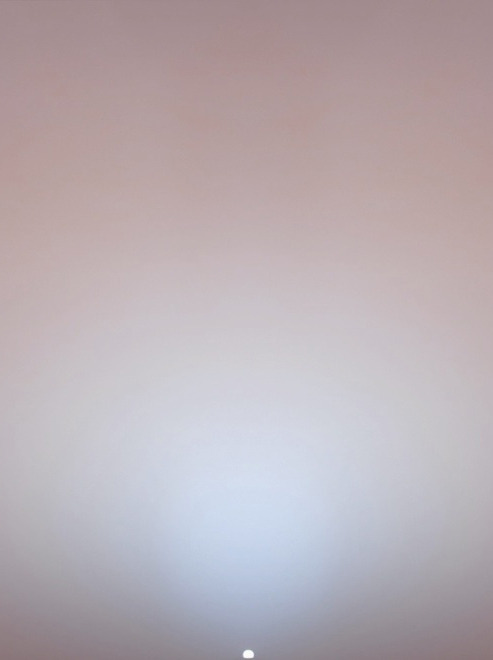Neutron Stars And Nuclear Pasta. Yummy!
Neutron Stars and Nuclear Pasta. Yummy!
The latest video from Kurzgesagt is a short primer on neutron stars, the densest large objects in the universe.
The mind-boggling density of neutron stars is their most well-known attribute: the mass of all living humans would fit into a volume the size of a sugar cube at the same density. But I learned about a couple of new things that I’d like to highlight. The first is nuclear pasta, which might be the strongest material in the universe.
Astrophysicists have theorized that as a neutron star settles into its new configuration, densely packed neutrons are pushed and pulled in different ways, resulting in formation of various shapes below the surface. Many of the theorized shapes take on the names of pasta, because of the similarities. Some have been named gnocchi, for example, others spaghetti or lasagna.
Simulations have demonstrated that nuclear pasta might be some 10 billion times stronger than steel.
The second thing deals with neutron star mergers. When two neutron stars merge, they explode in a shower of matter that’s flung across space. Recent research suggests that many of the heavy elements present in the universe could be formed in these mergers.
But how elements heavier than iron, such as gold and uranium, were created has long been uncertain. Previous research suggested a key clue: For atoms to grow to massive sizes, they needed to quickly absorb neutrons. Such rapid neutron capture, known as the “r-process” for short, only happens in nature in extreme environments where atoms are bombarded by large numbers of neutrons.
If this pans out, it means that the Earth’s platinum, uranium, lead, and tin may have originated in exploding neutron stars. Neat!
More Posts from Scenesofspace and Others


The Rings of Saturn and it’s moon, Enceladus.

The Sun rises over Earth in a postcard illustrated by Soviet cosmonaut Alexei Leonov, recalling the 1965 mission when he became the first human to walk in space.

Space Shuttle Endeavour mounted atop one of NASA’s modified Boeing 747 Shuttle Carrier Aircraft.
A tour of the vastness of the Universe
From astrophysicist Robert Simpson, a tour of the Universe from humans to the largest structure of the Universe. The piece is full of interesting little bits like:
The average female is 1.62 metres [tall] – that’s 5.4 light-nanoseconds.
If the Earth was a beach ball then all life on Earth exists within just 1mm around the surface.
Out by Pluto, the Sun itself is has dimmed to look like an other stars.
If the Sun was a blood cell then the Milky Way is the size of Europe.
See also Steven Strogatz on the Sagan Planet Walk in Ithaca, NY.
As you stroll from one to another, you can’t help noticing that the first four planets are really close together. It takes a few seconds, a few tens of steps, to walk from the Sun to Mercury and then on to Venus, Earth and Mars. By contrast, Jupiter is a full two-minute walk down the block, just past Moosewood Restaurant, waiting for someone to stop by and admire it. The remaining planets are even lonelier, each marooned in its own part of town. The whole walk, from the Sun to Pluto, is about three-quarters of a mile long and takes about 15 minutes.
My favorite detail: they added a new station to the Sagan Walk, the star nearest to our solar system. It’s in Hawaii.








Enceladus, moon of Saturn, observed by the Cassini space probe on December 19, 2015. (NASA)

Circling the Sun (Mercury meets Venus)

Where did the Moon come from?

The Moon is about 40 to 140 million years younger than the Earth and its geology offers broad hints that it was formed in an impact. This is called the giant impact hypothesis.
Nobody can be sure what actually happened, but computer simulations provide some clues. In one simulation, the newly-formed Earth suffers an impact with another planet (called Theia, a little larger than Mars). Theia is torn apart, its core dragged down through Earth’s interior to merge with the Earth’s core. Much of Theia’s mantle is absorbed into Earth’s mantle, and the side of Theia furthest away from the impact is hurled into space. About half the material ejected by the collision is lost and the rest accretes to form the Moon.
The Earth’s axis is tilted, and it is left spinning faster than it does today. A day lasts about ten hours. Months are much shorter too, as the new Moon orbits the Earth much faster. It is also much closer. Had there been anyone on Earth to observe it, they would have glimpsed a Moon twice the present size in the Earth’s primitive sky.
The Moon has since slowed the Earth’s spin, and it is moving away from us at a rate of almost 4 centimetres a year.
You can learn more about the birth of our Moon via Origins: The Scientific Story of Creation by Jim Baggott, or by following #BaggottOrigins across social media.
Image: Moon, by Yutaka Tsutano. CC-BY-2.0 via Flickr.

-
 scenesofspace reblogged this · 5 years ago
scenesofspace reblogged this · 5 years ago -
 scenesofspace reblogged this · 5 years ago
scenesofspace reblogged this · 5 years ago -
 jkottke reblogged this · 5 years ago
jkottke reblogged this · 5 years ago